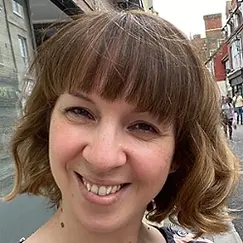MEMBER INFORMATION
Dr Sarah Fiddyment received her BSc in Biochemistry from the University of Zaragoza (Spain) in 2006, having completed three years of medical school and two years specialization in Biochemistry. Her MSc and subsequent PhD (awarded in 2011) were both completed at the same university, working in the field of proteomics in cardiovascular research. She moved to the University of York in 2012 after being awarded a Marie Curie postdoctoral research fellowship to focus on the protein analysis of parchments throughout history. During this time she developed a non-invasive sampling technique that has allowed her unprecedented access to thousands of parchment documents, helping to establish the emerging field of biocodicology. She was subsequently awarded a British Academy Postdoctoral Fellow continuing her biomolecular analysis of parchment through history. She is currently a Postdoctoral Research Associate on the Beasts 2 Craft ERC project at the McDonald Institute for Archaeological Research (University of Cambridge).
ABM CONFERENCES
ABM MEMBER EVENTS
PUBLICATIONS + PROJECTS
Sarah Fiddyment, Matthew D. Teasdale, Jiří Vnouček, Élodie Lévêque, Annelise Binois & Matthew J. Collins
So you want to do biocodicology? A field guide to the biological analysis of parchment
Biocodicology, the study of the biological information stored in manuscripts, ofers the possibility of interrogating manuscripts in novel ways. Exploring the biological data associated to parchment documents will add a deeper level of understanding and interpretation to these invaluable objects, revealing information about book production, livestock economies, handling, conservation and the historic use of the object. As biotechnological methods continue to improve we hope that biocodicology will become a highly relevant discipline in manuscript studies, contributing an additional perspective to the current scholarship. We hope that this review will act as a catalyst enabling further interactions between the heritage science community, manuscript scholars, curators and conservators.

